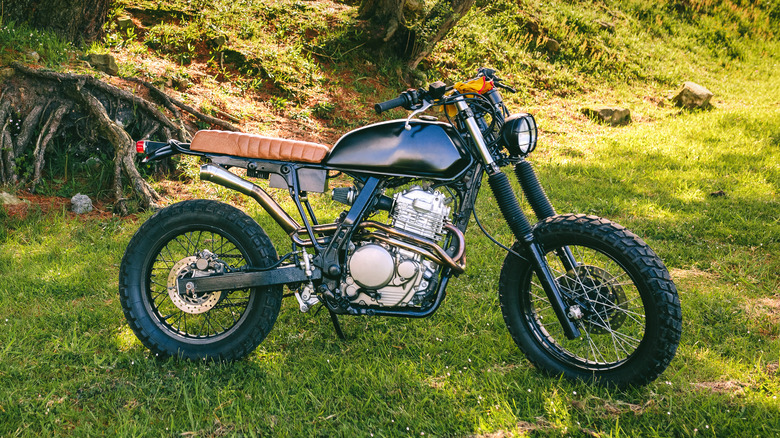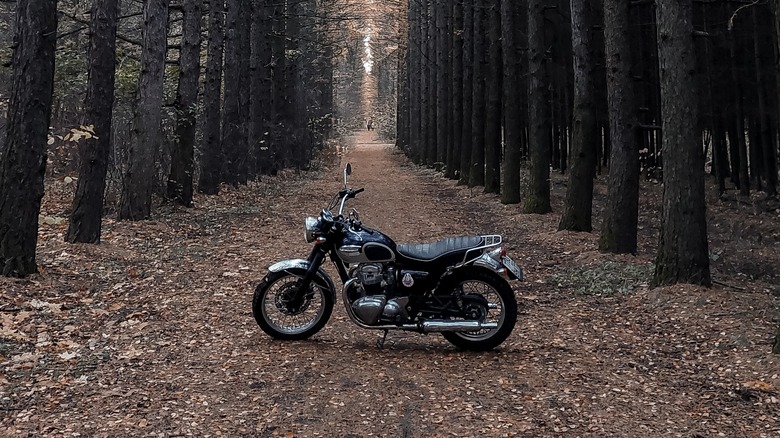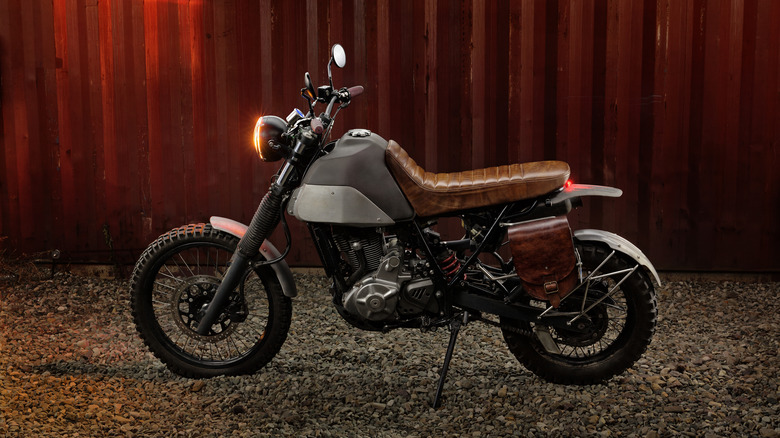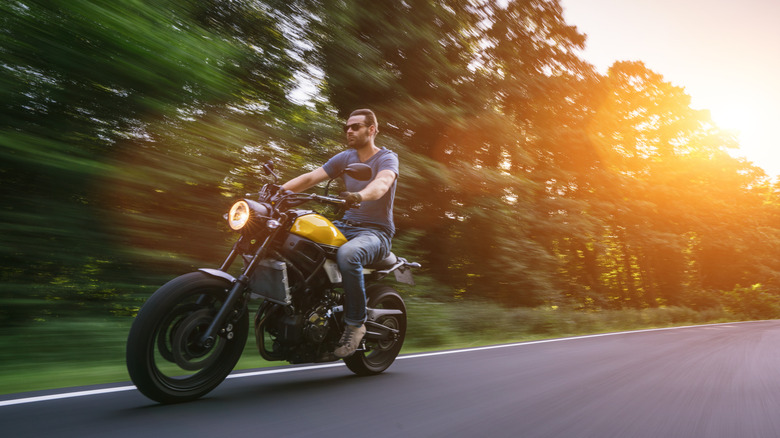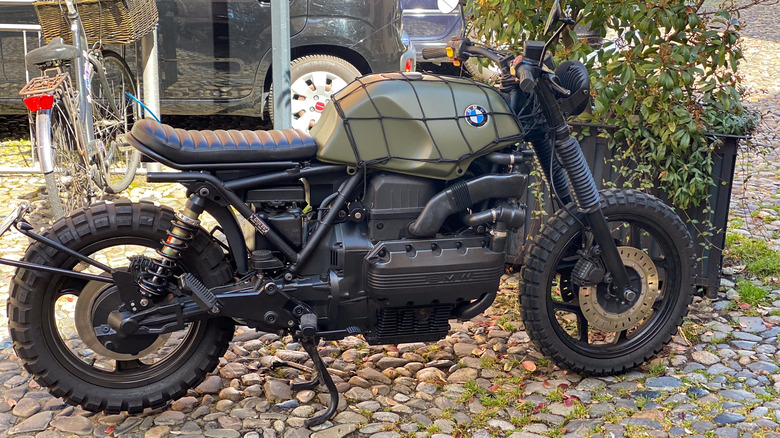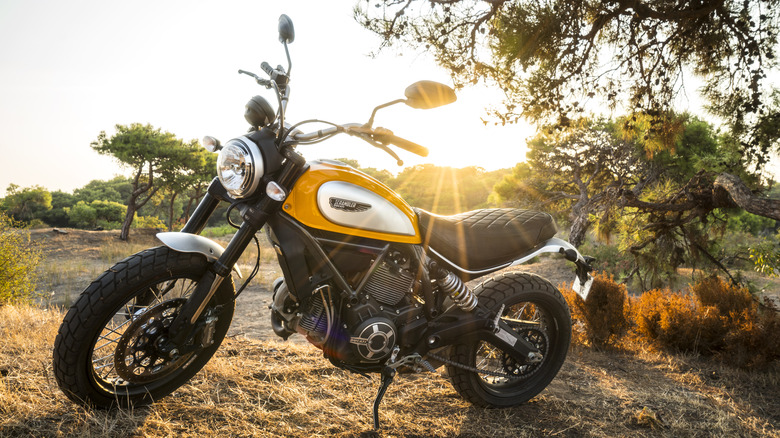Everything You Need To Know About Scrambler Motorcycles
The love for motorcycles is undeniable, transcending age and gender. It often begins with the fascination for two-wheelers that dates back to the first encounter with a bicycle. Motorcycles have a unique way of instilling a sense of adventure, regardless of their intended use.
Enter the scrambler, a motorcycle embodying sportiness and a rugged, vintage charm. Riding one is an exhilarating experience designed to ignite the spirit of adventure while offering the versatility to conquer rough terrains. The beauty of scrambler motorcycles lies in their dual nature — they're equally at home on the road, making them a practical choice for any rider. For those who hold a special place in their hearts for motorcycles, especially scramblers, this article aims to provide everything you might need to know about these rides, from their origins to how to build one. Whether you're a seasoned rider or a newcomer to the world of motorcycles, there's plenty to discover about scramblers.
A brief history
The origin of the scrambler motorcycle, while lacking specific details about when it started, can be traced back to England in the early 1900s. Tired of the usual racing routines, motorcycle race organizers decided to bend the rules a bit. They introduced a new challenge: reaching a designated point from another point, with the freedom to choose any route as long as it was faster than the competition.
This task was more demanding than it might seem, given the wet and rugged British terrain and the limited infrastructure of the time. A sports commentator witnessing this unique spectacle coined the term "scramble" for this type of motorcycling. Despite the risks, the sport gained popularity as more observers and enthusiasts joined in. They rode specially modified motorcycles stripped down to the essentials for off-road racing. After World War II, scramblers proved invaluable for navigating mountains, forests, and deserts, and this led to a significant increase in scrambler production and the introduction of professional off-road motorcycle racing competitions.
In the United States, particularly in California during the '60s, outlaw biker gangs embraced scrambler riding. Meanwhile, everyday motorcycle enthusiasts preferred to explore ungoverned desert areas on their scramblers. The sport's popularity received a boost from the film "On Any Sunday," featuring Steve McQueen on a stripped-down Husqvarna. This further encouraged motorcycle manufacturers to invest in scrambler production, a tradition that continues today.
The design
When you first lay eyes on a scrambler, it immediately evokes a sense of "vintage" charm. This is because scramblers retain the motorcycle's originality while incorporating modern design for enhanced convenience and ergonomics. A scrambler is essentially a machine built for pure enjoyment, featuring striking simplicity and durable accessories designed to withstand the rigors of its intended use.
Some of the standout features that make a scrambler unique include spoked aluminum-rimmed wheels, hoisted exhaust pipes, a 21-inch front tire paired with an 18-inch rear tire, compact headlights and gauges, and a slightly sloped seat. The tires have a rugged tread for improved traction, and the elevated placement of the exhaust pipes ensures ample ground clearance. For those with a discerning eye, you'll notice the utilitarian engineering, including the twin engines, impressive torque, and dual rear shocks.
While the specific engineering and aesthetics may vary from manufacturer to manufacturer, all scramblers share common characteristics: they perform well on paved roads, excel on unpaved trails, and remain compliant with legal requirements.
On-road and off-road performance
As mentioned, scrambler motorcycles are known to be both on and off-road-friendly. They are also reliable for long-distance touring, thanks to their comfortable seats and ample space for various luggage options, including side cases, saddle bags, top cases, tail bags, and tank bags. You can quickly secure these bags to the motorcycle using a detachable luggage mount or rack with straps, too.
Their relatively slim profile and lightweight design make these two-wheelers highly maneuverable on a variety of terrains, whether rough or smooth. The raised position of their exhaust pipes helps avoid potential damage, and their lightweight spoked wheels and rugged tires resist impact. Their unique engineering enhances suspension performance when navigating uneven paths.
It's important to note, however, that while scramblers perform admirably on-road, they do have some limitations when it comes to off-road riding. They may not match the rugged performance of quad bikes, which are specifically designed for all-terrain challenges. Nevertheless, it's crucial to emphasize that scramblers are still reliable off-road vehicles and provide a comfortable option for long-distance journeys.
How are scramblers built?
Basically, a scrambler is a motorcycle that undergoes a transformation by replacing certain components. When building a scrambler, the goal is to create a bike with a spirited twin/single engine, excellent suspension, ample ground clearance, and a lightweight design. For the perfect scrambler look, the first parts to leave a base bike would be the lights (which can later be replaced by a smaller type), seat, mudguards, fuel tanks, clocks, and fenders.
The exhaust system, ideally of the scarf-type for that classic scrambler sound, is relocated to a higher position. The fuel tank is swapped for a smaller one, and a robust, flat seat is added. High-mounted handlebars, spoked wheels, rugged tires for good traction, and an extended, refined suspension for increased height and shock resistance are essential elements of a proper scrambler motorcycle.
Other parts, either from the original bike or another donor, like the seat (which can be shortened) and the suspension, can be altered to reduce costs. Once these modifications are complete, the finished scrambler can be further customized to achieve the desired vintage appearance and enhanced functionality.
Popular scramblers
Historically, Husqvarna, Royal Enfield, Benelli, Triumph, and Ducati were among the first players in the game, with Triumph's Bonneville family and the first Ducati scramblers being all the rage in the '60s and the '70s.
Even presently, these brands have not lost their acclaim. One of the hottest scramblers in the 2023 market is the Triumph Street scrambler, created Bonneville-style, featuring three selectable riding modes, a liquid-cooled 900cc engine, and a power of 64.1 horsepower at 7,250 rpm. It might be a good choice for off-roading, but not as much as the Triumph Scrambler 1200, coming with 89 horsepower at 7,250 rpm and two variations, namely XC and XE, of which XC is ideal for tarmac roads, while the XE has been purpose-built for rough terrains.
Being among one of the five most underrated Ducati motorcycles, the Desert Sled from the scrambler tribe weighs only 209 kilograms (461 pounds) — great on the road and off, owing to elevated mudguards, a Kayaba suspension, and a power of 73 horsepower at 8,250 rpm, among others.
From BMW, the new R nineT Scrambler astounds with its Option 719 Shadow II billet pack, which comes with dirt and ride modes, an air-cooled boxer, and its overall modern yet vintage look.
The Honda CL500 looks as old-timey as anything and incorporates a twin-cylinder engine, a diamond tube frame, a Showa suspension, and more.
The Royal Enfield Scram 411, the Fantic Caballero, and the Indian FTR Rally are also scramblers highly coveted in 2023.
